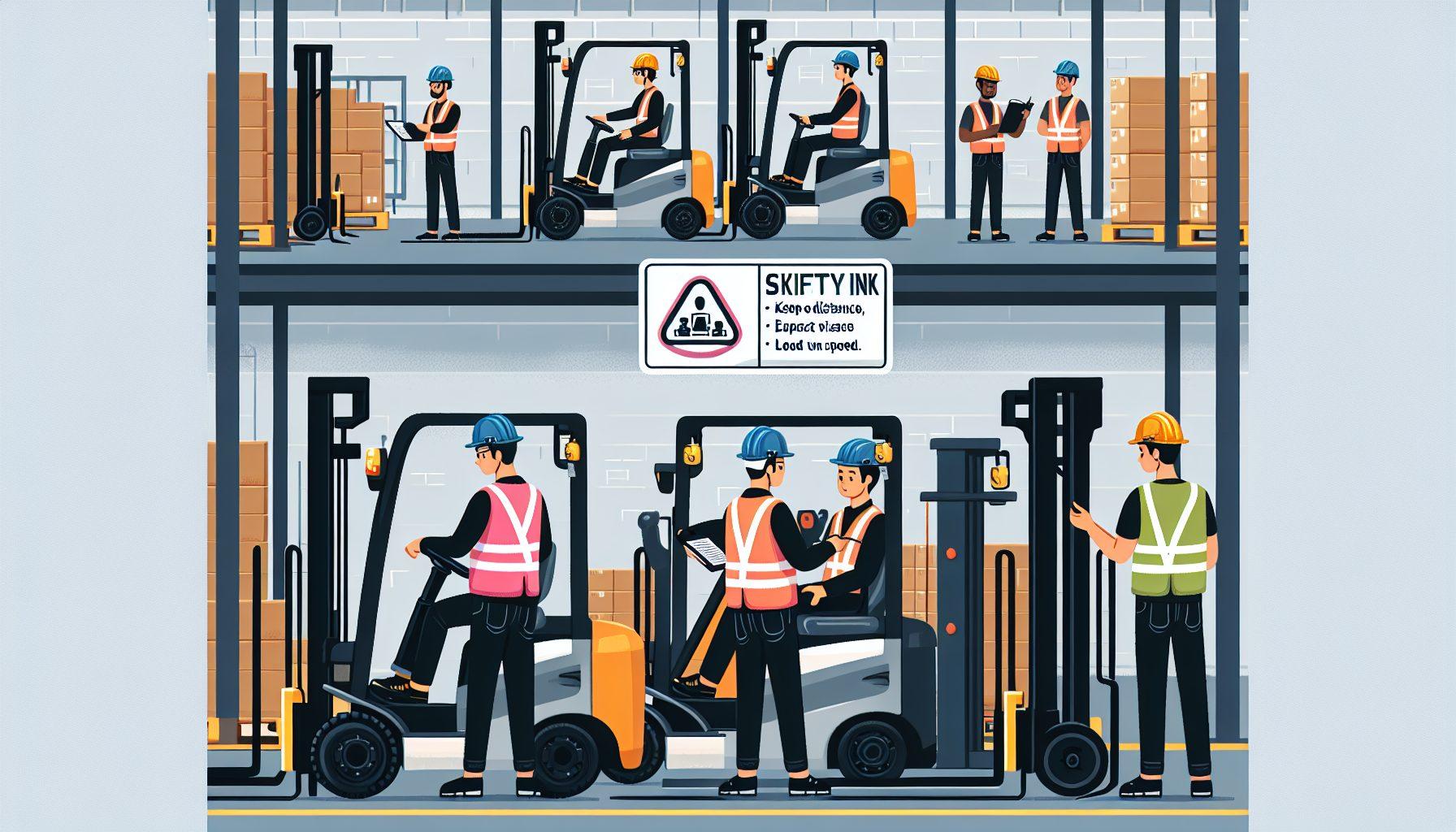Managing forklift safety is crucial in any warehouse environment, but it becomes even more challenging in multi-language work environments. Effective communication and understanding of safety protocols are essential to ensure the well-being of workers and the smooth operation of warehouse processes. In this article, we will explore strategies and best practices to manage forklift safety in multi-language work environments.
Promote a Strong Safety Culture
A strong safety culture is the foundation for managing forklift safety in any work environment. In multi-language work environments, it becomes even more critical to establish clear and consistent safety guidelines that can be easily understood by workers of different languages.
Begin by creating a comprehensive safety policy that outlines the expected safety practices and procedures. Display this policy prominently in multiple languages throughout the warehouse, ensuring that all employees can easily access and understand it.
Regular safety training programs should be conducted in the languages spoken by the workers. These training sessions should cover all aspects of forklift safety, including operating procedures, load handling, and emergency response. By providing training in languages that workers understand fluently, you can ensure that they comprehend the information correctly.
Implementing a reporting system where employees can anonymously report safety concerns or near-miss incidents is also essential. This encourages workers to actively participate in maintaining a safe environment and helps identify potential hazards that may arise due to language barriers.
Warehouse safety evaluations should be regularly conducted to identify any safety gaps or potential risks. These evaluations can help identify areas where additional safety measures may be needed or where language barriers could pose a higher risk. By proactively addressing these issues, you can minimize the chance of accidents or injuries.
Use Visual Communication
In a multi-language work environment, utilizing visual communication tools can be highly effective in ensuring safety messages are understood by all employees. Visual cues bypass language barriers and provide clear instructions or warnings.
Use pictograms or graphical symbols to represent different safety instructions and procedures. These symbols should be universally recognized and easily understandable. Place them in prominent locations, such as near forklifts, loading docks, or high-risk areas, to reinforce safety messages.
Additionally, color-coded signage and floor markings can help convey important safety information. For example, using a specific color to indicate pedestrian walkways or areas where forklifts are not allowed can help employees navigate the warehouse safely.
Another visual communication tool is the use of safety posters and infographics. These can provide concise information about forklift safety practices, emergency procedures, and common hazards. Ensure that these materials are available in multiple languages to cater to the diverse workforce.
Implement Multilingual Training Materials
Developing multilingual training materials is crucial to ensure that all employees have access to essential safety information and guidelines. These materials should be available in the languages spoken by the workers and cover all aspects of forklift safety.
Online training modules or videos can be created with subtitles or voiceovers in different languages. This allows employees to learn at their own pace and ensures that language is not a barrier to understanding the content. Interactive quizzes or assessments can also be incorporated to evaluate comprehension.
In addition to online materials, provide printed safety manuals or handbooks in the languages spoken by the workers. These materials should include detailed information about forklift operation, maintenance, and safety procedures. Make sure they are easily accessible in designated areas, such as break rooms or training rooms.
Promote Interpersonal Communication
Encouraging interpersonal communication between employees of different language backgrounds can help bridge the language gap and enhance workplace safety. Foster a culture of collaboration and personal responsibility by promoting open communication channels.
Implement buddy systems or mentorship programs where experienced forklift operators can mentor new workers from different language backgrounds. This allows for on-the-job training and immediate clarification of any safety-related queries or concerns.
Consider organizing team-building activities or cultural exchange programs to encourage interaction between employees. This can help break down barriers and create an inclusive environment where everyone feels comfortable communicating, despite language differences.
Regularly Review and Improve Safety Measures
Forklift safety in multi-language work environments should be an ongoing process of improvement. Regularly review safety measures and seek feedback from employees to identify areas that might require additional attention.
Conduct safety meetings or toolbox talks in various languages to discuss any safety issues or concerns. Encourage employees to share their experiences and suggestions for improving safety procedures. This feedback can provide valuable insights into areas where language barriers could pose significant risks.
Utilize technology to enhance safety measures. For example, implementing forklift proximity sensors or audible warning systems that can alert both forklift operators and pedestrians to potential collisions can be highly effective in preventing accidents.
Invest in language translation services or interpreters to facilitate effective communication between workers and management. This can ensure that safety messages, instructions, and emergency procedures are accurately conveyed to employees who may not be fluent in the dominant language spoken in the warehouse.
Conclusion
In multi-language work environments, managing forklift safety requires a comprehensive approach that addresses language barriers and promotes effective communication. By promoting a strong safety culture, utilizing visual communication tools, implementing multilingual training materials, encouraging interpersonal communication, and regularly reviewing and improving safety measures, warehouse managers can ensure the well-being of their workers and the smooth operation of their facilities. Proactive measures in forklift safety not only reduce the risk of accidents and injuries but also create an inclusive and harmonious work environment.

